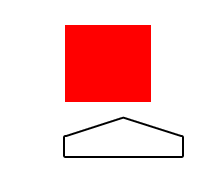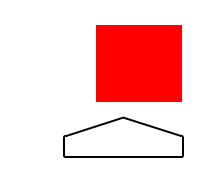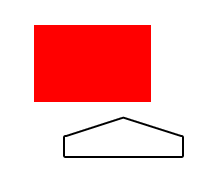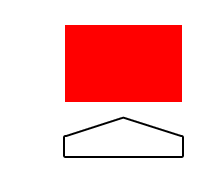I’ll be honest with you. As recently as the 2004 postseason, I thought David Ortiz was a fluke. The reason is simple: watching Ortiz play for the Twins in 2002, it was clear that he was not a very good hitter. He could not reach a pitch on the outside corner, and he could not hit left-handers. In 2002, Ortiz went 24-for-118 against lefties, for a .203 average to go along with his .256 on-base percentage and .381 slugging percentage. Put simply, he absolutely sucked against lefties, and at that point in his career, he was destined to be a platoon player.
Ortiz’s numbers against lefties didn’t get much better in 2003, his first year with the Red Sox. He had one more hit in two fewer at-bats, for a slightly better .216 average and .260 OBP. His slugging percentage did go up a bit more (to a still-pedestrian .414), which may have been a sign of things to come.
The lefty splits in 2004 continued to improve, to the point that he was almost a worthwhile player to have in the lineup against lefties. His batting average against southpaws jumped to .250, with a .315 OBP and .469 SLG. He had 41 homers and 139 RBI that season, based a lot on his great numbers against righties (.326 average, .411 OBP, .671 SLG, 31 HR), but his numbers against lefties were at least to the point where he wasn’t a sure out like he was in 2002.
And then things suddenly came together in 2005. Ortiz, who by this point was officially known as Big Papi thanks to his late- and post-season heroics in 2004, batted .300 overall for the season — and he actually batted better against lefties than righties! Well, kind of. He had a higher batting average against lefties than righties (.302 to .298), although his OBP and SLG were both still superior against righties (.413/.641 vs. .362/.532). But it is an undeniable fact that by 2005, Papi was officially a good hitter against lefties.
So did I think Ortiz was a fluke? Absolutely. Was it the numbers that changed my mind? Absolutely not. I don’t think it is possible for numbers to affect my thinking regarding flukes. After all, a fluke, by definition, has to put up good numbers, doesn’t he? There are two reasons I don’t consider Ortiz a fluke, and I will compare him to the most famous fluke I can think of to illustrate.
Sammy Sosa was a fluke. Sure, he was a fluke who lasted for several years, but a fluke nonetheless. I said so in 1998, and my opinion never changed. He was a fluke for two reasons: 1) there was no demonstrable learning process to explain how he went from being a crappy hitter known mostly for his strong throwing arm to being one of the premier power hitters in baseball; and 2) there was no identifiable adjustment that he made to make that improvement. The only thing that changed for Sosa was that he suddenly and unexplainably (wink wink) became ridiculously muscular.
After the 1997 season, Sosa was a .257 hitter for his career. From 1998 through 2003, he was a .302 hitter. That means that over the course of a 600-at-bat season, he went from averging 154.2 hits to averaging 181.2 hits. That is 27 extra hits every season. Of course his 600-AB home run average went from 30.6 to 56.4, which is an increase of 26 homers per year. And as we all know, home runs count as hits, so really, the only improvement in Sosa’s game over that time was the home runs.
Then, as quickly as it came on, Sosa’s newfound hitting ability went bye-bye. Coincidentally, the decline back into mediocrity came the same season MLB first started testing for steroids. Weird.
So there you have it. Sosa was a fluke. A big, goofy, grinning, steroid-powered fluke. And he was everything that David Ortiz is not.
Those two things that Sosa DIDN’T have? Yeah, Papi has both of them. There is the demonstrable learning process, evident from the gradual but consistent improvement in his performance against lefties. And there is the easily identifiable adjustment that he has made: he now stands much closer to the plate and doesn’t step in the bucket on pitches from lefties. This allows him to reach the outside part of the plate, a spot where my dead grandma could have struck him out four years ago.
There is also one simple thing that has made this adjustment possible: Ortiz has, as they say in Boston, wicked fast hands. If it was as simple as moving closer to the plate so you can reach the outside corner, Kal Daniels might have lasted more than seven seasons in the majors. The problem is, if you move closer to the plate, all you are generally doing is moving your weak spot from one side of the plate to the other.
For example, let’s look at Kal Daniels. (For those of you who don’t know, Daniels was an outfielder and first baseman for the Reds and Dodgers in the late 1980s and early ’90s, and he was every bit as bad at hitting left-handed pitchers as 2002-Ortiz was.) Here is a diagram of Daniels’ “hot zone” — the part of the strike zone where he could hit the ball:

As you can see, hit hot zone was not as wide as home plate itself, so if he moved closer to the plate, it would move his weak spot from the outside corner to the inside corner, like this:

This isn’t intended to pick on Kal Daniels. The fact is, most hitters have a hot zone that only covers about two-thirds of the plate. David Ortiz probably had no reason to believe that he was any different. But it turns out that he is different. VERY different.
Ortiz has those wicked fast hands, you’ll recall. That means he can turn on pitches that a lot of guys can’t, which fills in that missing one-third in his hot zone. It’s likely that Ortiz always had a hot zone big enough to cover the whole plate, but he was compensating for a weakness he didn’t have by standing so far from the plate. So Papi’s 2002 hot zone looked something like this:

So Ortiz had no problem with the inner two-thirds of the plate, and he also had several inches inside that he could turn on when he needed to. But it wasn’t until he moved closer to the plate, thereby moving his hot zone over the entire plate, that he became one of the best hitters in baseball:

And that’s why I don’t think Ortiz is a fluke — the ability was there all along. He is legitimately one of the best hitters in baseball, in the top two or three as far as power hitters go, and there’s no reason to believe that it will go away any time soon. He is only 30 years old this season, so he should easily be able to put up five or six more great seasons, which should get him over 400 homers for his career.
If David Ortiz retires with 450 homers, 1300 RBI, and a .290 batting average, we’re looking at a likely Hall of Famer. And if you had told me in 2002 that I would be writing “David Ortiz” and “Hall of Fame” in the same sentence, I would have thought you were crazy. (And if I had written that in 2002, I would have been crazy.)
(FINAL NOTE: Please note that I wrote an entire article praising David Ortiz without ever using the word “clutch.” I think that “clutch” is ridiculously overrated — for reasons I will explain in another post, sometime soon — and I also think that we do a disservice to a great hitter if we only focus on his late-inning heroics. Ed Sprague was clutch for the 1993 Blue Jays, but he was no David Ortiz. Francisco Cabrera came through big time for the 1991 Braves, but I don’t think Big Papi would take it as a compliment to be compared to Cabrera. David Ortiz is a great hitter, clutch or not.)